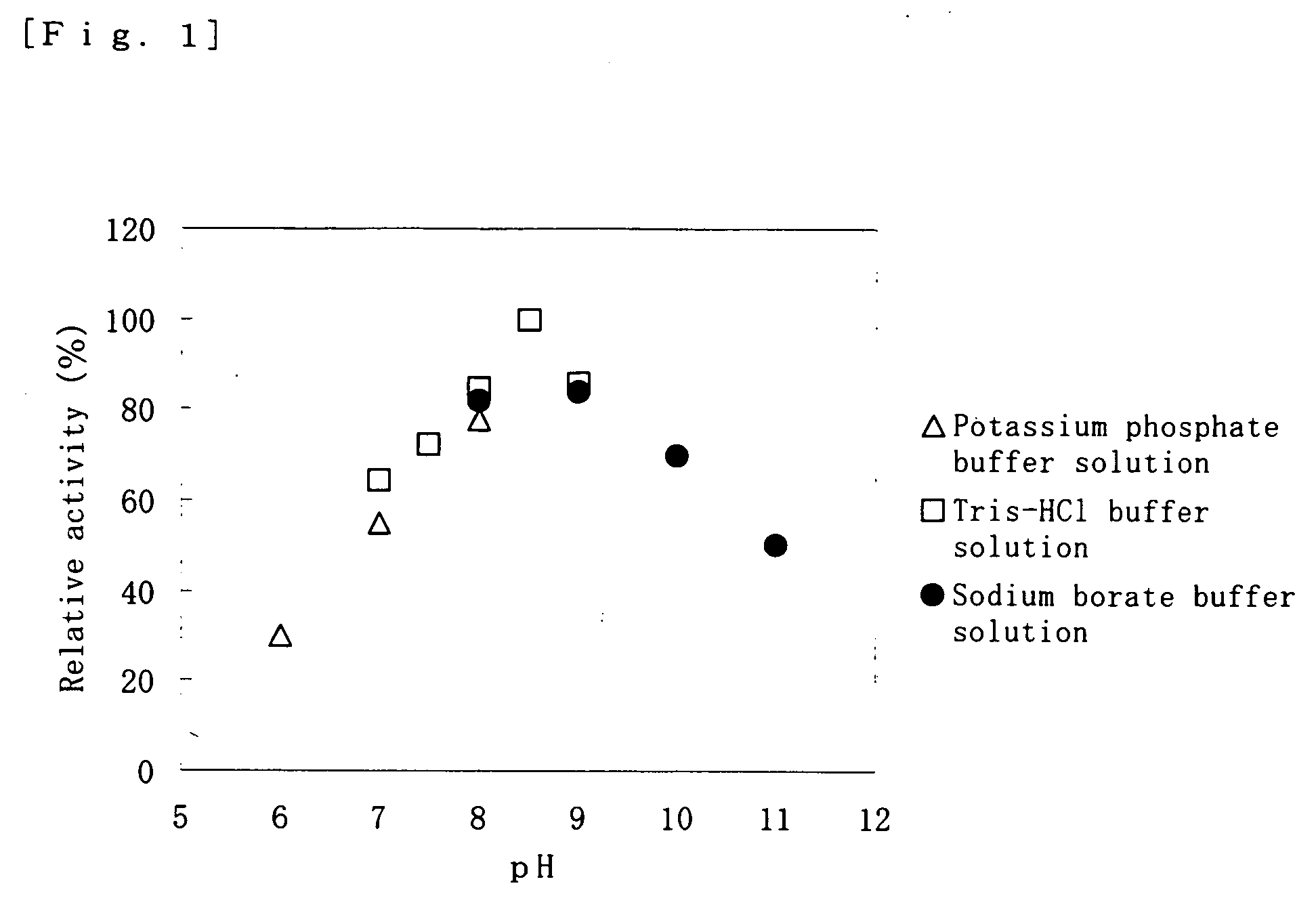Method for quantitatively determining homocysteine and a reagent for quantitative determination of homocysteine
- Summary
- Abstract
- Description
- Claims
- Application Information
AI Technical Summary
Benefits of technology
Problems solved by technology
Method used
Image
Examples
examples
[0088] Hereinafter, the present invention will be described in further detail with reference to examples. However, it should be mentioned that the present invention is by no means restricted to them. Here, the measurement of activity of cysteine dioxygenase is conducted in accordance with the above-mentioned measurement method, in which the process of the consumption rate of dissolved oxygen in the solution, which is consumed with L-cysteine as a substrate, is monitored by use of a dissolved oxygen meter (“TD-650” model, manufactured by Toko Kagaku Kenkyusho).
[0089] Preparation Example (Preparation of Cysteine Dioxygenase)
[0090] (1) Preparation of cDNA Encoding Human Cysteine Dioxygenase)
[0091] The cDNA encoding human cysteine dioxygenase was PCR-amplified with a pair of specific primers designated Sequence No. 1 (sense primer) and Sequence No. 2 (antisense primer) from a commercially available human liver cDNA library (manufactured by Invitrogen Co.), and cloned. The above-menti...
example 1
Study on Storage Stability of Active Form of Cysteine Dioxygenase
[0114] Study on storage Condition of Active Form of Cysteine Dioxygenase in a Solution.
[0115] An active form of cysteine dioxygenase was added to each of respective 100 mM buffer solutions as indicated in Table 1, and stored at 4° C., and then the enzyme activity was monitored at certain intervals. The results are also indicated in Table 1.
TABLE 1Residual activity of cysteineBufferdioxygenase (%)solutionpH2 days passed6 days passedMalate-NaOH6.067336.55535Imidazole-HCl6.565557.06238Acetate-NaOH5.52006.056286.57244MES-NaOH6.047116.559187.0265PIPES-NaOH6.538147.04515ADA-NaOH6.0006.5007.000BisTris-NaOH6.01706.5607.000Tris-HCl8.500TAPS-NaOH8.500Bicine-NaOH8.500
[0116] From Table 1, it is found that the storage stability of the cysteine dioxygenase is remarkably improved by storing in a buffer solution having a buffer capacity in a pH range at around 5.5 to 7 (particularly maleic acid, imidazole, acetate buffer solution ...
example 2
Measurement of Homocysteine in the Coexistence of Cysteine
[0125] First, second and third reagents having the following compositions were prepared.
First reagent:Active form of cysteine dioxygenase30U / mlAmmonium sulfate500mMImidazole-HCl buffer solution20mM (pH 6.5)Second reagent:o-Acetylhomoserine-lyase (manufactured0.7U / mlby Unitika Ltd., trade name: “GCS”)Thioglycerol10mMADA (N-[2-acetamido]iminodiacetic acid)10mMNeocuproine2mMGallium nitrate0.5mMTartaric acid0.5mMSurfactant0.6%Tris-HCl buffer solution132mM (pH 8.5)Third reagent:Fe (III) EDTA5.6mMNitroso-PSAP (Dojindo Laboratories)2mM
[0126] For a specimen to be tested with above reagents, pooled serum was combined with solution containing varied amount of cystine, which is an oxidized form of cysteine, in the ratio 9:1, by volume, so that ones containing 0 to 500 μmol / L of cystine (which correspond to 0 to 1,000 μmol / L in terms of cysteine) were prepared, while measurement was carried out with Hitachi 7170 Automatic analyzer. Sp...
PUM
| Property | Measurement | Unit |
|---|---|---|
| Acidity | aaaaa | aaaaa |
| Concentration | aaaaa | aaaaa |
Abstract
Description
Claims
Application Information
 Login to View More
Login to View More - R&D
- Intellectual Property
- Life Sciences
- Materials
- Tech Scout
- Unparalleled Data Quality
- Higher Quality Content
- 60% Fewer Hallucinations
Browse by: Latest US Patents, China's latest patents, Technical Efficacy Thesaurus, Application Domain, Technology Topic, Popular Technical Reports.
© 2025 PatSnap. All rights reserved.Legal|Privacy policy|Modern Slavery Act Transparency Statement|Sitemap|About US| Contact US: help@patsnap.com

